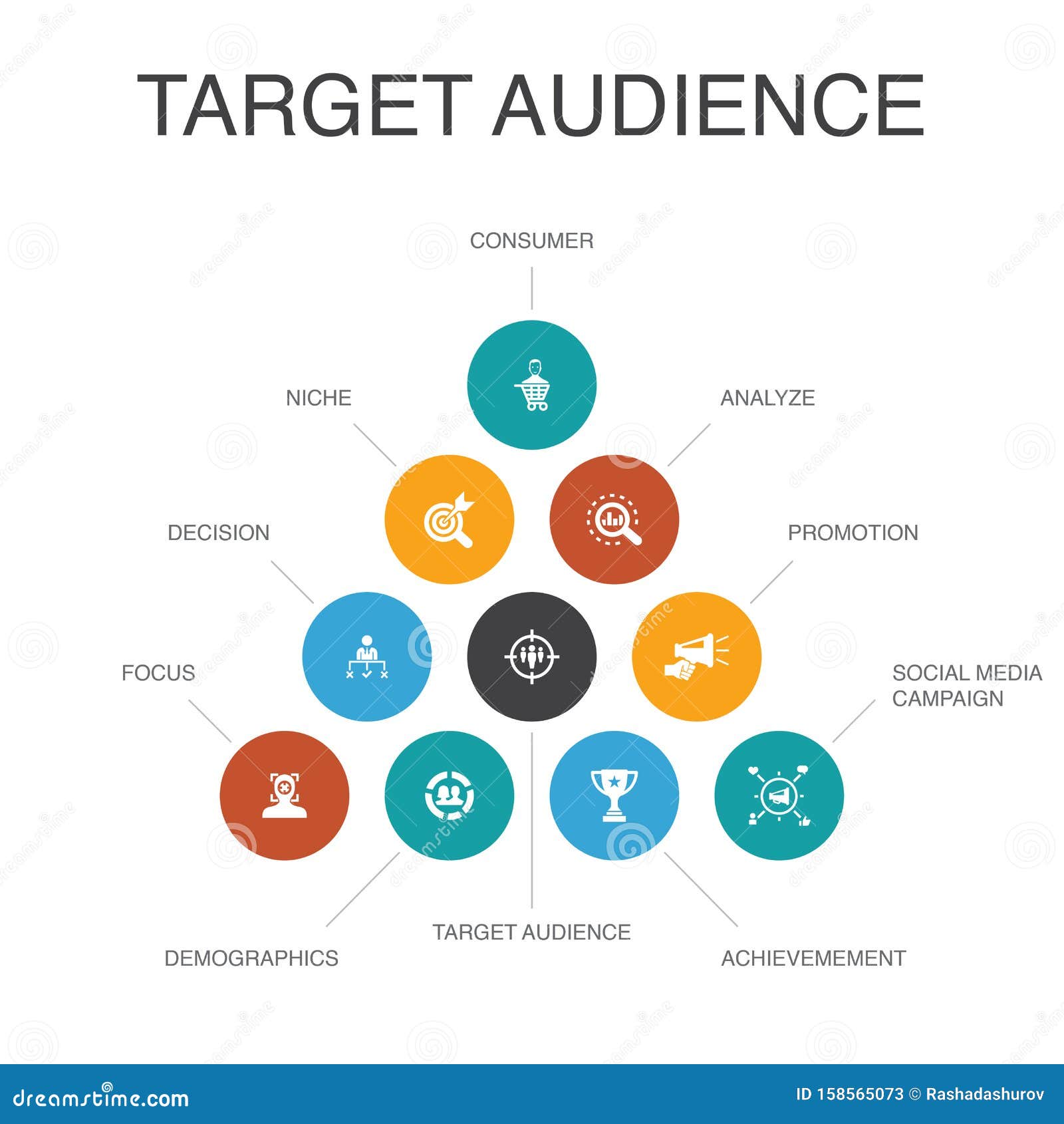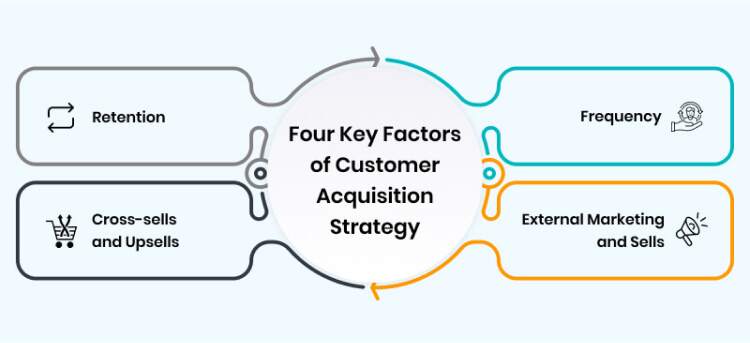Understanding Your Target Audience: The Key to Successful Customer Acquisition
To develop effective customer acquisition strategies, businesses must first understand their target audience. This involves gathering data on demographics, behaviors, and motivations to create buyer personas that inform customer acquisition efforts. By understanding the needs, preferences, and pain points of their target audience, businesses can tailor their marketing messages and tactics to resonate with potential customers.
Market research is a critical component of understanding the target audience. This can involve conducting surveys, focus groups, and online polls to gather data on customer preferences and behaviors. Additionally, businesses can leverage social media listening tools to monitor online conversations and identify trends and patterns in customer behavior.
Once data has been gathered, businesses can create buyer personas that provide a detailed understanding of their target audience. These personas should include information on demographics, behaviors, and motivations, as well as pain points and challenges. By developing buyer personas, businesses can create targeted marketing campaigns that speak directly to the needs and preferences of their target audience.
For example, a business that sells outdoor gear may create a buyer persona for a 25-35 year-old male who enjoys hiking and camping. This persona may include information on demographics, such as income level and education, as well as behaviors, such as frequency of outdoor activities. By understanding the needs and preferences of this persona, the business can create targeted marketing campaigns that speak directly to this audience.
Understanding Your Target Audience: The Key to Successful Customer Acquisition
Understanding the target audience is a crucial step in developing effective customer acquisition strategies. By gathering data on demographics, behaviors, and motivations, businesses can create buyer personas that inform their marketing efforts and help them connect with potential customers. This process involves conducting market research, analyzing customer feedback, and leveraging data analytics to gain a deeper understanding of the target audience.
Market research is a critical component of understanding the target audience. This can involve conducting surveys, focus groups, and online polls to gather data on customer preferences and behaviors. Additionally, businesses can leverage social media listening tools to monitor online conversations and identify trends and patterns in customer behavior. By analyzing this data, businesses can create detailed buyer personas that provide a comprehensive understanding of their target audience.
Buyer personas should include information on demographics, such as age, income level, and education, as well as behaviors, such as purchasing habits and online activities. They should also include information on motivations, such as goals and challenges, and pain points, such as common complaints or frustrations. By creating detailed buyer personas, businesses can develop targeted marketing campaigns that speak directly to the needs and preferences of their target audience.
For example, a business that sells outdoor gear may create a buyer persona for a 25-35 year-old male who enjoys hiking and camping. This persona may include information on demographics, such as income level and education, as well as behaviors, such as frequency of outdoor activities. By understanding the needs and preferences of this persona, the business can create targeted marketing campaigns that speak directly to this audience and increase the effectiveness of their customer acquisition strategies.
How to Leverage Digital Marketing Channels for Customer Acquisition
Digital marketing channels play a crucial role in customer acquisition strategies, offering a range of opportunities to reach and engage with potential customers. By leveraging social media, email marketing, and content marketing, businesses can increase brand awareness, drive website traffic, and generate leads. To optimize these channels for maximum ROI, businesses must understand their target audience and tailor their marketing efforts accordingly.
Social media marketing is a key component of digital marketing, allowing businesses to connect with customers and promote their brand. By creating engaging content and leveraging paid social media advertising, businesses can increase their online presence and drive website traffic. For example, a business that sells outdoor gear may use social media to promote their products and engage with customers who share similar interests.
Email marketing is another effective digital marketing channel, allowing businesses to nurture leads and encourage conversions. By creating targeted email campaigns and leveraging marketing automation tools, businesses can personalize their marketing efforts and increase the effectiveness of their customer acquisition strategies. For instance, a business that sells software may use email marketing to promote their products and offer free trials to potential customers.
Content marketing is also a critical component of digital marketing, allowing businesses to establish themselves as thought leaders in their industry. By creating high-quality, informative content, businesses can attract and engage with potential customers, increasing the chances of conversion. For example, a business that sells financial services may create a blog to provide advice and insights on personal finance, establishing themselves as a trusted authority in the industry.
By leveraging these digital marketing channels, businesses can develop effective customer acquisition strategies that drive results. By understanding their target audience and tailoring their marketing efforts accordingly, businesses can increase brand awareness, drive website traffic, and generate leads, ultimately driving revenue growth and market competitiveness.
The Power of Referral Marketing: Turning Customers into Brand Ambassadors
Referral marketing is a powerful customer acquisition strategy that leverages the influence of existing customers to attract new ones. By incentivizing customers to refer friends and family, businesses can tap into the trust and credibility that comes with word-of-mouth marketing. This approach not only drives new customer acquisition but also fosters customer loyalty and advocacy.
Effective referral marketing programs require a deep understanding of the target audience and their motivations. Businesses must identify the right incentives and rewards to encourage customers to refer others, such as discounts, free products, or exclusive access to new services. For example, a business that sells software may offer a free trial or a discount on a premium product to customers who refer friends and family.
Referral marketing can be implemented through various channels, including email marketing, social media, and in-app notifications. Businesses can also leverage customer advocacy platforms to streamline the referral process and track the effectiveness of their programs. By measuring the success of referral marketing efforts, businesses can refine their strategies and optimize their customer acquisition approaches.
One of the key benefits of referral marketing is its ability to drive high-quality leads. Referred customers are more likely to convert and become loyal customers, as they have been recommended by someone they trust. Additionally, referral marketing can help businesses reduce their customer acquisition costs, as the cost of acquiring a new customer through referral is often lower than through traditional marketing channels.
By incorporating referral marketing into their customer acquisition strategies, businesses can tap into the power of word-of-mouth marketing and turn their customers into brand ambassadors. This approach not only drives new customer acquisition but also fosters customer loyalty and advocacy, ultimately driving revenue growth and market competitiveness.
Measuring and Optimizing Customer Acquisition: Key Metrics and Tools
Measuring and optimizing customer acquisition efforts is crucial for businesses to ensure they are getting the most out of their customer acquisition strategies. By tracking key metrics such as customer acquisition cost (CAC) and return on investment (ROI), businesses can identify areas for improvement and make data-driven decisions to optimize their customer acquisition approaches.
Customer acquisition cost (CAC) is a critical metric that measures the cost of acquiring a new customer. This includes the cost of marketing and sales efforts, as well as the cost of any incentives or rewards offered to customers. By tracking CAC, businesses can identify areas where they can reduce costs and improve the efficiency of their customer acquisition efforts.
Return on investment (ROI) is another key metric that measures the revenue generated by a customer acquisition effort compared to the cost of that effort. By tracking ROI, businesses can identify which customer acquisition strategies are generating the most revenue and adjust their efforts accordingly.
There are a variety of tools and software available to help businesses track and analyze customer acquisition data. These include customer relationship management (CRM) software, marketing automation platforms, and data analytics tools. By leveraging these tools, businesses can gain a deeper understanding of their customer acquisition efforts and make data-driven decisions to optimize their approaches.
For example, a business that sells software may use a CRM platform to track customer interactions and analyze customer acquisition data. By analyzing this data, the business can identify which customer acquisition strategies are generating the most revenue and adjust their efforts accordingly.
By measuring and optimizing customer acquisition efforts, businesses can ensure they are getting the most out of their customer acquisition strategies. By tracking key metrics and leveraging tools and software, businesses can identify areas for improvement and make data-driven decisions to optimize their customer acquisition approaches.
Personalization and Customer Experience: The Future of Customer Acquisition
Personalization and customer experience are becoming increasingly important in customer acquisition strategies. By leveraging AI and machine learning, businesses can deliver tailored experiences that meet the unique needs and preferences of their target audience. This approach not only enhances the customer experience but also increases the effectiveness of customer acquisition efforts.
Personalization involves using data and analytics to create customized experiences for each customer. This can include personalized content, product recommendations, and offers that are tailored to the individual customer’s needs and preferences. By delivering personalized experiences, businesses can build trust and loyalty with their customers, ultimately driving revenue growth and market competitiveness.
Customer experience is also a critical component of customer acquisition strategies. By delivering exceptional customer experiences, businesses can differentiate themselves from their competitors and build a loyal customer base. This can include providing seamless and intuitive customer journeys, offering multichannel support, and ensuring that customer feedback is heard and acted upon.
Companies that have successfully implemented personalized customer acquisition strategies include Amazon, Netflix, and Spotify. These companies use AI and machine learning to deliver tailored experiences that meet the unique needs and preferences of their customers. For example, Amazon uses personalized product recommendations to drive sales and increase customer engagement.
By incorporating personalization and customer experience into their customer acquisition strategies, businesses can stay ahead of the competition and adapt to changing customer acquisition landscapes. By delivering tailored experiences that meet the unique needs and preferences of their target audience, businesses can build trust and loyalty with their customers, ultimately driving revenue growth and market competitiveness.
Building a Customer Acquisition Team: Essential Roles and Skills
A successful customer acquisition team requires a combination of skills and expertise to drive revenue growth and market competitiveness. By understanding the key roles and skills required for a customer acquisition team, businesses can structure and manage their teams for maximum impact.
Marketers are a critical component of a customer acquisition team, responsible for developing and executing marketing campaigns that drive lead generation and conversion. They should have expertise in digital marketing channels, including social media, email marketing, and content marketing.
Sales professionals are also essential to a customer acquisition team, responsible for converting leads into customers and driving revenue growth. They should have strong communication and interpersonal skills, as well as the ability to understand customer needs and preferences.
Data analysts are also a key part of a customer acquisition team, responsible for tracking and analyzing customer acquisition data to inform marketing and sales strategies. They should have expertise in data analysis and interpretation, as well as the ability to communicate complex data insights to non-technical stakeholders.
Other essential roles and skills for a customer acquisition team include customer success managers, who are responsible for ensuring customer satisfaction and loyalty, and product managers, who are responsible for developing and launching new products and services.
By structuring and managing a customer acquisition team with the right combination of skills and expertise, businesses can drive revenue growth and market competitiveness. By understanding the key roles and skills required for a customer acquisition team, businesses can build a team that is equipped to succeed in today’s competitive market.
Staying Ahead of the Competition: Emerging Trends in Customer Acquisition
The customer acquisition landscape is constantly evolving, with new trends and technologies emerging all the time. To stay ahead of the competition, businesses must be aware of these emerging trends and adapt their customer acquisition strategies accordingly.
One of the most significant emerging trends in customer acquisition is the use of chatbots. Chatbots are AI-powered tools that can be used to automate customer interactions, providing 24/7 support and helping to drive conversions. By leveraging chatbots, businesses can improve the customer experience and increase the efficiency of their customer acquisition efforts.
Another emerging trend in customer acquisition is voice marketing. With the rise of voice assistants like Alexa and Google Assistant, businesses are now able to reach customers through voice-activated channels. By optimizing their customer acquisition strategies for voice marketing, businesses can tap into this growing trend and reach new customers.
Account-based marketing is also an emerging trend in customer acquisition. This approach involves targeting specific accounts and decision-makers with personalized content and messaging. By leveraging account-based marketing, businesses can increase the effectiveness of their customer acquisition efforts and drive more conversions.
By staying ahead of the competition and adapting to emerging trends and technologies, businesses can drive revenue growth and market competitiveness. By incorporating chatbots, voice marketing, and account-based marketing into their customer acquisition strategies, businesses can stay ahead of the curve and achieve long-term success.






